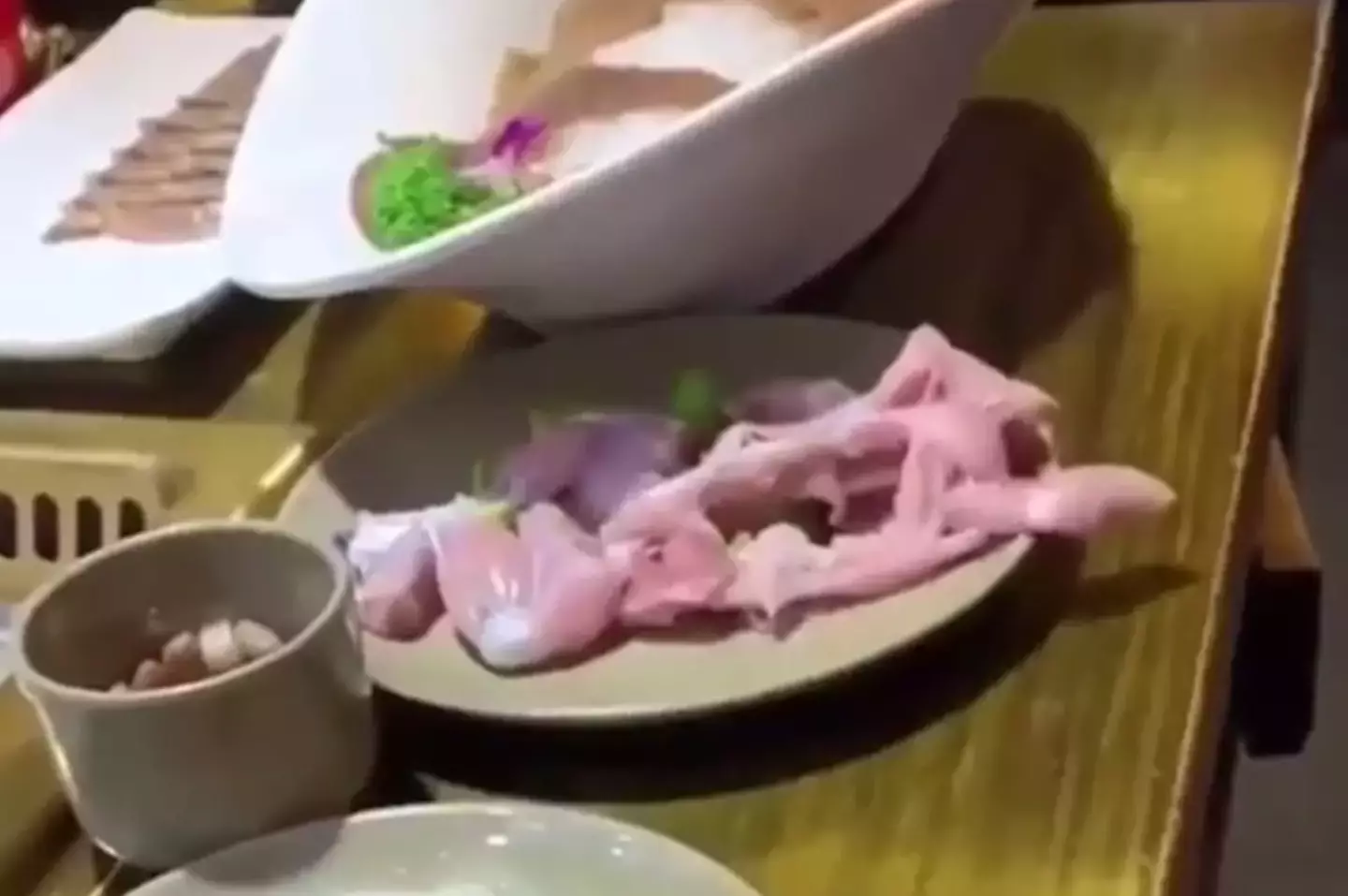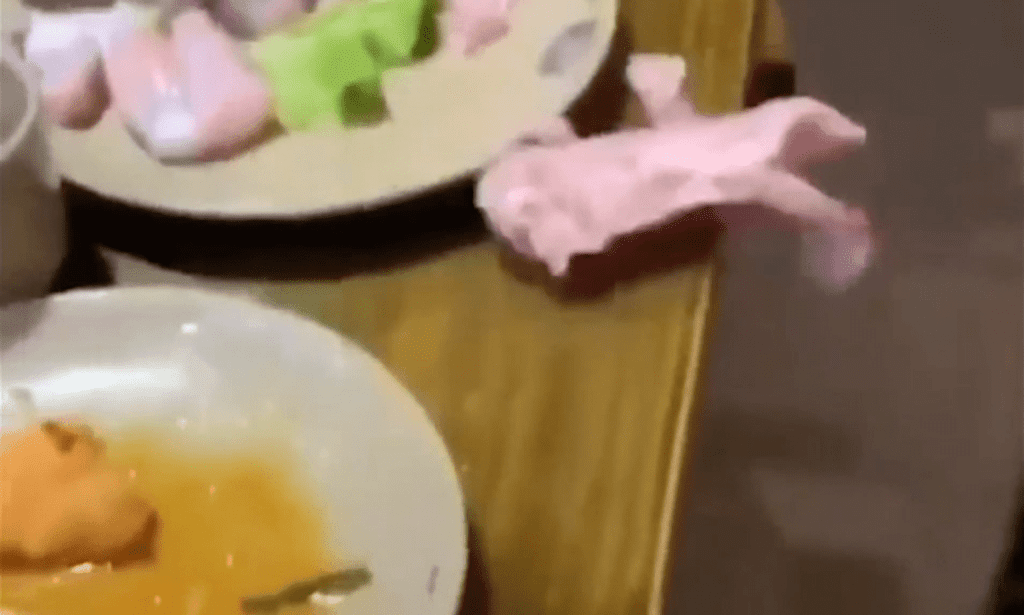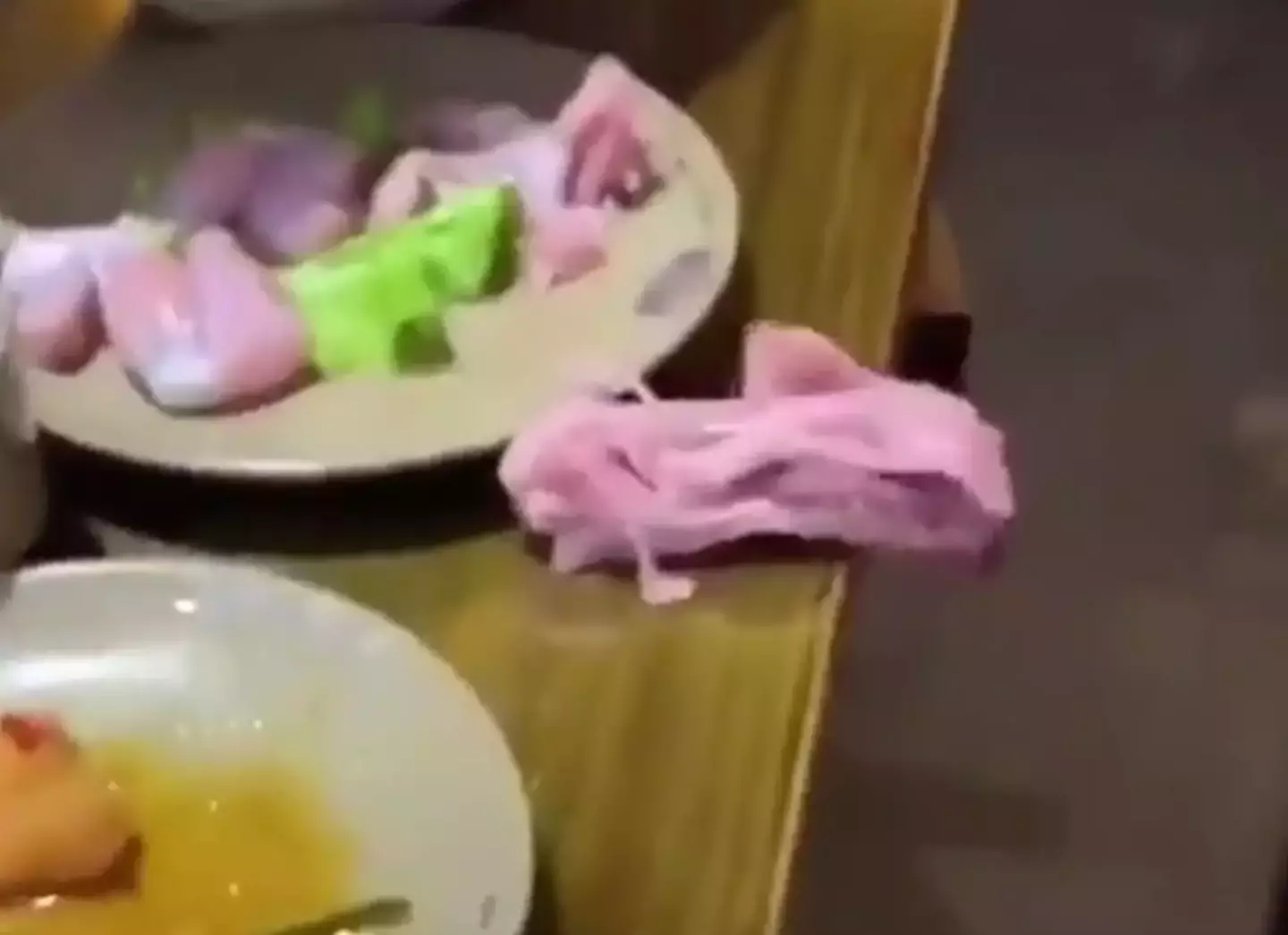Imagine sitting down for a nice meal at a restaurant, ready to enjoy a hearty dish, when suddenly, your food starts moving—seemingly alive. This bizarre and unsettling scene became a reality for one restaurant-goer, whose meal of raw meat appeared to “crawl off” the plate, sparking confusion, fear, and screams from fellow diners. The chilling moment, captured on video, quickly went viral, leaving people to wonder if they had just witnessed a case of “zombie” meat.

Certainly unexpected. (Facebook)
While the footage spooked thousands of viewers, there’s no need to brace for a zombie apocalypse. As strange as it may seem, there’s a scientific explanation for this creepy occurrence. Let’s break down what really happened, why the meat was twitching, and why you don’t need to worry about your dinner suddenly coming to life.
The Viral Video: When Meat “Comes Alive”
The now-viral video shows a piece of raw meat on a plate, seemingly writhing and twitching as if it has a mind of its own. As you can imagine, the reaction in the restaurant was pure chaos. Diners screamed, horrified at the sight of their meal moving like something out of a horror movie. It didn’t take long for the internet to start making comparisons to “zombie” lore, with some even joking about the undead rising.
But before jumping to any supernatural conclusions, let’s dig into what really caused this unsettling display.
Scientific Explanation Behind the ‘Zombie Meat’
As eerie as it looked, the reality is much less spine-chilling than it seems. The phenomenon has nothing to do with the meat being “alive” and everything to do with simple muscle chemistry. The most likely reason the meat started twitching is that it was an extremely fresh cut of animal tissue. When the meat is freshly butchered and exposed to salt, it can trigger a reaction in the muscle fibers that causes them to contract.
Here’s what happens: even though the animal is no longer alive, its muscle cells may still respond to certain stimuli, like salt. The sodium ions in the salt can cause the muscles to contract, making the meat appear to “move” on its own. This contraction is similar to what happens in living tissue but is purely a chemical reaction, not an indication of life. The result is a creepy, twitching piece of meat that looks straight out of a zombie flick.
Not the First Time: Ikizukuri and Fresh Meat Traditions
While the video might be shocking to some, the idea of eating fresh—or even live—animals is not new in certain parts of the world. Some diners pointed out that this phenomenon may have taken place in a restaurant specializing in ikizukuri, a Japanese culinary tradition where live seafood is prepared and served almost immediately. In such settings, it’s not unusual to see movement from freshly prepared fish, octopus, or even frogs due to the same muscle reactions.
Though ikizukuri is most commonly associated with seafood, the principles of serving ultra-fresh meat can apply to other animals as well. It’s this focus on serving meat while it’s incredibly fresh that likely led to the unusual movements seen in the viral video.
How Salt Triggers the “Zombie” Effect
The key element behind the twitching meat is salt. When salt is applied to fresh muscle tissue, it causes an influx of sodium ions into the muscle cells. These ions stimulate the muscle fibers, causing them to contract. This is the same process that occurs in living organisms when muscles receive a signal from the nervous system to move. In the case of this viral video, the animal’s nervous system is no longer active, but the muscle cells can still react temporarily to external stimuli, such as salt.

This muscle response is short-lived, but it’s enough to create the illusion of meat “coming to life.” While this can be shocking for those unaccustomed to such sights, it’s a natural process that doesn’t indicate anything harmful or sinister.
Public Reactions: Fear, Fascination, and the Gross Factor
As with many viral videos, the reaction to the “zombie meat” has been a mix of fascination, horror, and humor. Some viewers were genuinely scared, wondering if something was terribly wrong with the food. Others took a more lighthearted approach, joking about the meat being “possessed” or the start of a zombie uprising.
One thing is for sure: the incident struck a chord with diners and social media users alike. The idea of your meal suddenly “waking up” is enough to unsettle even the bravest of eaters. As one person commented, “If my food ever does that, I’m never going back to that restaurant!” while another added, “I’d scream too if my dinner tried to crawl off my plate.”
Why This Isn’t a Cause for Concern
While the video might make you think twice before eating raw or freshly cut meat, the reality is that this phenomenon is harmless. The twitching is simply a natural response to salt on very fresh meat. There’s no health risk associated with it, and the meat is perfectly safe to eat once it has been properly prepared.

The meat made a run for it. (Facebook)
In fact, the practice of consuming fresh or raw meat has long been part of various cultural culinary traditions. Whether it’s ikizukuri in Japan or tartare in France, fresh meat is considered a delicacy in many parts of the world.
Can This Happen to Your Meal?
For those wondering if their steak could suddenly start moving, the answer is: it depends. If you’re dining at a restaurant that serves extremely fresh meat and adds salt directly to the cut, you might see some twitching. However, this is not common in most places where the meat has been aged, frozen, or processed in a way that prevents these muscle reactions.
That said, if you ever do encounter a plate of “zombie” meat, just remember: it’s not alive, it’s science.
Conclusion: Not a Zombie Apocalypse, Just Chemistry
The viral video of the so-called “zombie” meat may have spooked people out, but there’s no need to panic. This bizarre sight is simply the result of a fresh cut of meat reacting to salt, causing muscle contractions that look eerily lifelike. While unsettling, it’s not a sign of anything supernatural or dangerous.
Next time you sit down for a meal, rest assured that your food isn’t about to crawl off your plate—unless, of course, you’re in a restaurant that specializes in ultra-fresh cuisine. In that case, maybe be prepared for a little more movement on your dinner plate than usual. Enjoy your meal, and remember, it’s all part of the dining experience!


